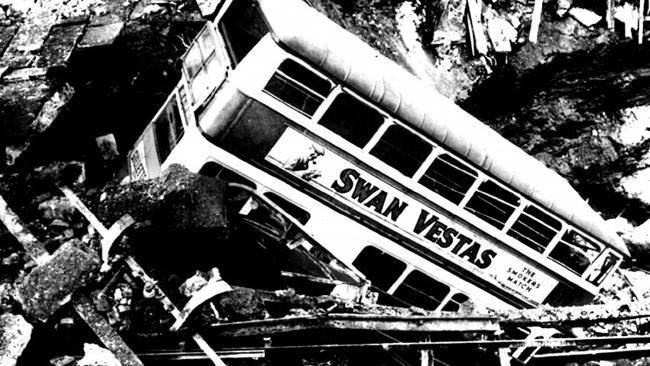People escaped WWI bomb blast on Balham Tube station only to die in the crush to escape
People fled to the safety of a tube station in Balham in October 1940 only to find themselves trapped beneath a bomb crater

Today in History
Don't miss out on the headlines from Today in History. Followed categories will be added to My News.
There was chaos at Balham Underground station in south London 75 years ago today. Nazi bombers had been delivering their deadly cargo to England since September when the citizens of Balham heard the air raid siren warn them of another attack.
Hundreds rushed for the local underground, thinking it would protect them from the bombs. But this time they were sadly mistaken. A bomb tore through the road, killing more than
60 and leaving hundreds injured.
The incident took place during the Blitz, a term adapted from “Blitzkrieg” (Lightning War) often used in the media to refer to swift-moving German tactics employed in their conquest of Belgium and France from September 1939 to May 1940. When the Germans began bombing British cities and towns the word Blitz became a convenient nickname for the German aerial bombing campaign.
The Blitz began in earnest on September 7, 1940, an attempt to get the British to capitulate or to
soften them up for an invasion after the Nazis had failed to destroy the RAF earlier in the year.
Although Hitler officially called off his invasion by September 17, the Luftwaffe continued to rain bombs down on England in October 1940. The British lived in dire fear of being bombed, running for their lives when the air raid sirens sounded.
While most headed for home-built Anderson shelters made of corrugated iron, some hid in basements or found sturdier, but rarer, government-built community shelters. But about 4 per cent used underground railway stations, known colloquially as “the Tube”.
In the first weeks of the war the government tried to keep people out of the Tube, so they would be clear for commuting and troop movements. There were also fears that people might take to living underground.
The gates to the stations were therefore locked during raids. But unable to build enough communal shelters, and with an increase in air raids, the government eventually yielded to pressure and
took a more lenient attitude towards people seeking shelter in the tunnels.
People crammed into the stations and often slept the night there, feeling they were safe from harm.
The underground had been a part of British life since construction began in the late 19th century. Balham Underground had opened in 1926, and since the first air raids people had been using it for a makeshift shelter.
Just before 8pm on October 14, 1940 the air raid sirens began their awful, mournful wail. Estimates say as many as 600 people packed on to the platforms at Balham, many bringing bedding in case they had to stay the night.
At about 10pm a 1400kg armour piercing bomb smashed through the surface of the High St and exploded, blowing a huge crater in the road and tearing off the fronts of adjacent buildings. A double decker bus crashed into the hole, although no one aboard was killed.
Down below the bomb had collapsed part of a northbound tunnel and ruptured water, sewage
and gas mains, causing the station to begin to flood.
None of the 600 people below were killed by the explosion or the collapse. While some accounts say people were drowned, others say all the fatalities were due to the panic among those trying to get out of the station.
Although a memorial plaque at the site once stated that 64 people died, some accounts say 68 and the official Commonwealth War Graves figure is 66. The plaque was later removed and replaced with one that simply states: “In remembrance of the civilians and London Transport staff who were killed at this station during the Blitz on the night of 14 October 1940.”
At the time the incident was not widely publicised for fear of the impact it might have on morale, but it was difficult to keep quiet about so many deaths.
Repair teams quickly went to work and the station was reopened in January 1941. But cold weather and memories of those who had died kept many people from using it as a shelter thereafter.
It had not been the first time people had died, nor would it be the last or the worst in terms of deaths, but the image of the bus in the crater would become one of the symbols of the Blitz.
The bombing became a brief but important part of the plot of Ian McEwen’s novel Atonement and is dramatically portrayed in the film, except that the event is dated incorrectly to October 15.
Originally published as People escaped WWI bomb blast on Balham Tube station only to die in the crush to escape



